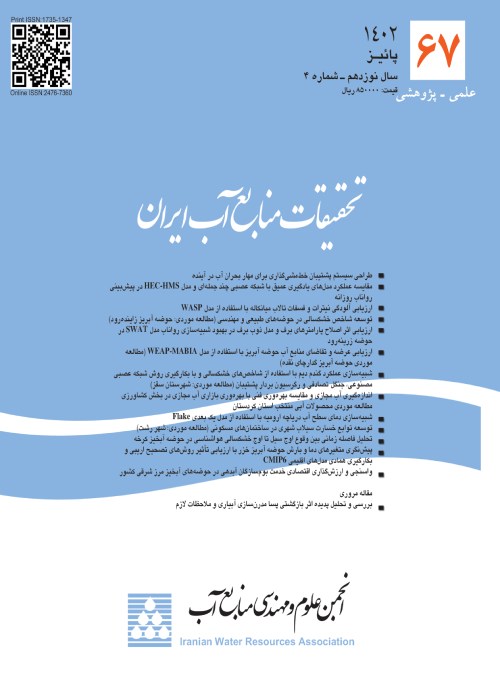Systemic Analysis of Vulnerability of the Sistan Plain to Water Scarcity - Experiencing Policy Options Based on the Resilience Approach
Author(s):
Abstract:
Sistan plain is located in Hirmand River delta which is the only source of water for the plain. The plain has therefore the highest level of dependency on transboundary water resources in national scale. In spite of many studies mostly focusing on supply side management practices - the observations are implying unsustainability and vulnerability of the area to the Hirmand river discharge variations. Analyzing the Sistan plain vulnerability to water scarcity, the paper adopts the vulnerability framework developed by Fussel. To apply the framework, the system attributes of concern in terms of socio-economic and biophysical features need to be determined. Thus, the value added and total population were considered to represent the socio-economic features of the vulnerable system and the water reservoir associated to Lake Hamoun was considered as the biophysical feature. Then, in order to reduce the system vulnerability to water scarcity, this study suggested applying the theory of transition resilience which is in line with the real local conditions towards self-organized changes in the area. The economic local condition is transforming from purely agricultural towards activities with less dependency on water which is, somehow, an adaptation to the water scarcity conditions. In this way, the paper seeked for economic changes to bring the local welfare in the water scarcity conditions back to that associated to the water abundant conditions. Therefore, five resilience levels have been defined as the reference levels for the system associated to the input annual water discharge to the area between 3000 to 5000 MCM. A system dymamic model was applied to determine the values associated to the system attributes of concern according to the five levels of the system resilience until 2050. Then, necessary changes were introduced to the system to satisfy the reference resilience levels under the condition that the river annual input discharge would decrease to 700 MCM (90 percent of Irans water right from Hirmand River). The values of local water productivity and also the total volume of allocated water to economic uses necessary to satisfy the reference resilience levels were represented in terms of two curves. For instance, to bring the system into an equilibrium condition the model outputs suggested that increasing water productivity to 56000 Rial per Cubic meter (according to the base price of 2011) with 240 MCM of maximum water volume supplly will lead to residence of 1 million inhabitants with 16 million IRR annual income per capita (according to the base price of 2011) till 2050. However, the water reservoir in Lake Hamoun would never get back to its initial condition.
Keywords:
Language:
Persian
Published:
Iran Water Resources Research, Volume:12 Issue: 1, 2016
Page:
40
magiran.com/p1557818
دانلود و مطالعه متن این مقاله با یکی از روشهای زیر امکان پذیر است:
اشتراک شخصی
با عضویت و پرداخت آنلاین حق اشتراک یکساله به مبلغ 1,390,000ريال میتوانید 70 عنوان مطلب دانلود کنید!
اشتراک سازمانی
به کتابخانه دانشگاه یا محل کار خود پیشنهاد کنید تا اشتراک سازمانی این پایگاه را برای دسترسی نامحدود همه کاربران به متن مطالب تهیه نمایند!
توجه!
- حق عضویت دریافتی صرف حمایت از نشریات عضو و نگهداری، تکمیل و توسعه مگیران میشود.
- پرداخت حق اشتراک و دانلود مقالات اجازه بازنشر آن در سایر رسانههای چاپی و دیجیتال را به کاربر نمیدهد.
In order to view content subscription is required
Personal subscription
Subscribe magiran.com for 70 € euros via PayPal and download 70 articles during a year.
Organization subscription
Please contact us to subscribe your university or library for unlimited access!


